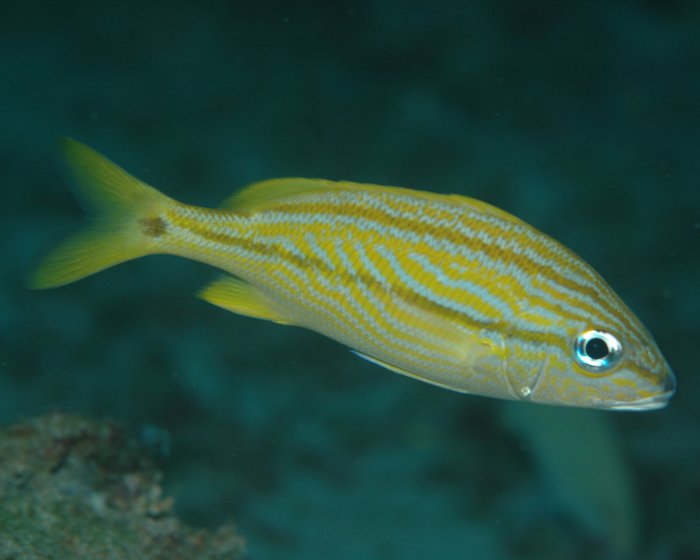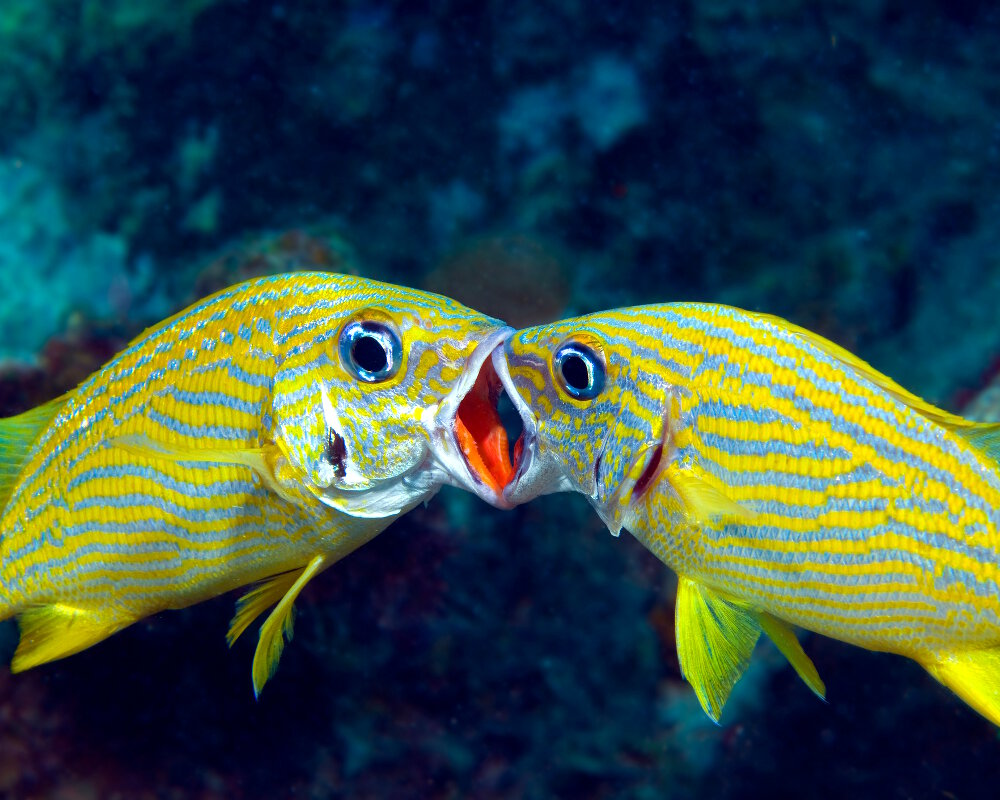Sealife guideThe french gruntHaemulon flavolineatum
Last updated on 09/05/2024 at 09:40 PM
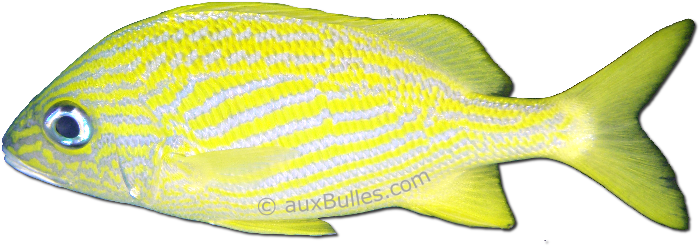
The french grunt (Haemulon flavolineatum)
Taxonomy
- Common name: French grunt, banana grunt, gold laced grunt, open-mouthed grunt, redmouth grunt, yellow grunt
- French name: Gorette jaune
- Spanish name: Ronco condenado
- Scientific name: Haemulon flavolineatum (Desmarest, 1823)
- Family name: Haemulidae
- Order name: Perciformes
- Class name: Actinopterygii
Description
The french grunt is a medium-sized fish, about 6 inches long, with a maximum length of around 12 inches. The french grunt has an oblong body, predominantly yellow with broad yellow stripes that are horizontal on the upper part of the body and oblique below the lateral line. Its pelvic, dorsal, anal and caudal fins are also entirely yellow.
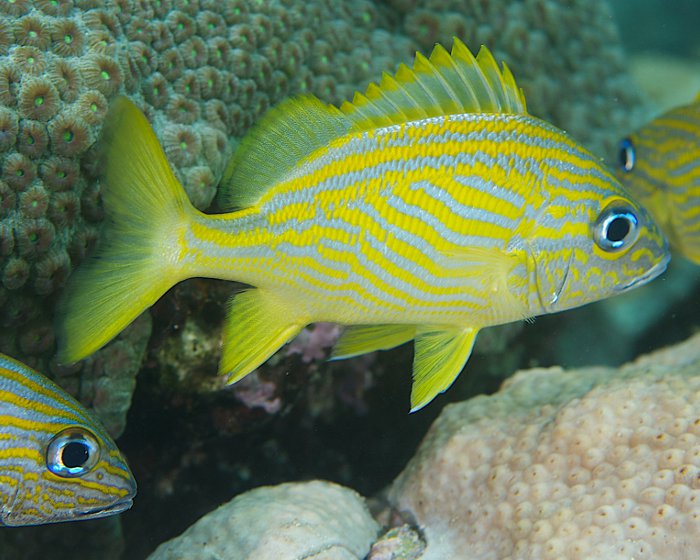
The french grunt is predominantly yellow due to its broad yellow stripes, which run horizontally on the upper part of the body and obliquely below the lateral line, as well as the yellow color of its fins
Juvenile french grunts have a slightly different appearance with a black spot at the base of their tail and additional broad black horizontal stripes across their body !
Geographic range
The french grunt is commonly found in the Caribbean sea, the Gulf of Mexico and along the coasts of Florida. It inhabits the tropical waters of the western Atlantic, from Florida in the north to the coasts of Brazil in the south, including Central America and the Caribbean with its many islands like the Keys, the Bahamas and Guadeloupe.
Habitat
The french grunt typically lives in shallow waters from the surface down to about 100 feet. It forms large schools, sometimes numbering in the thousands, around coral reefs. These schools often stay sheltered along rocks, under rock overhangs or beneath large branches of elkhorn coral.
Diet
The french grunt is a carnivorous fish that hunts at night. Its diet consists mainly of small crustaceans, mollusks and marine worms.
In the marine food chain, the french grunt is preyed upon by larger reef fish such as groupers.
Reproduction
The french grunt reproduces sexually. Juvenile french grunts are characterized by a black spot at the base of the tail and broad longitudinal black stripes that fade with age.
Did you know ?
The common english name « grunt » refers to the sounds the fish makes, which resemble the grunts of a pig. The sound is produced by the fish's well-developed teeth located in its throat.
Grunts are related to snappers but are generally smaller and have more deeply forked tails.
The french grunt is listed as many other marine species within The IUCN Red List of threatened species. The french grunt appears in the IUCN Red List since 2016 within the category Least Concern !
Tips for observing
Schools of grunts are rarely composed of individuals of a single species. It is common to see a predominant species along with one or more individuals of other species, so you might often observe a school of french grunts with one or more blue striped grunts, white grunts or smallmouth grunts.
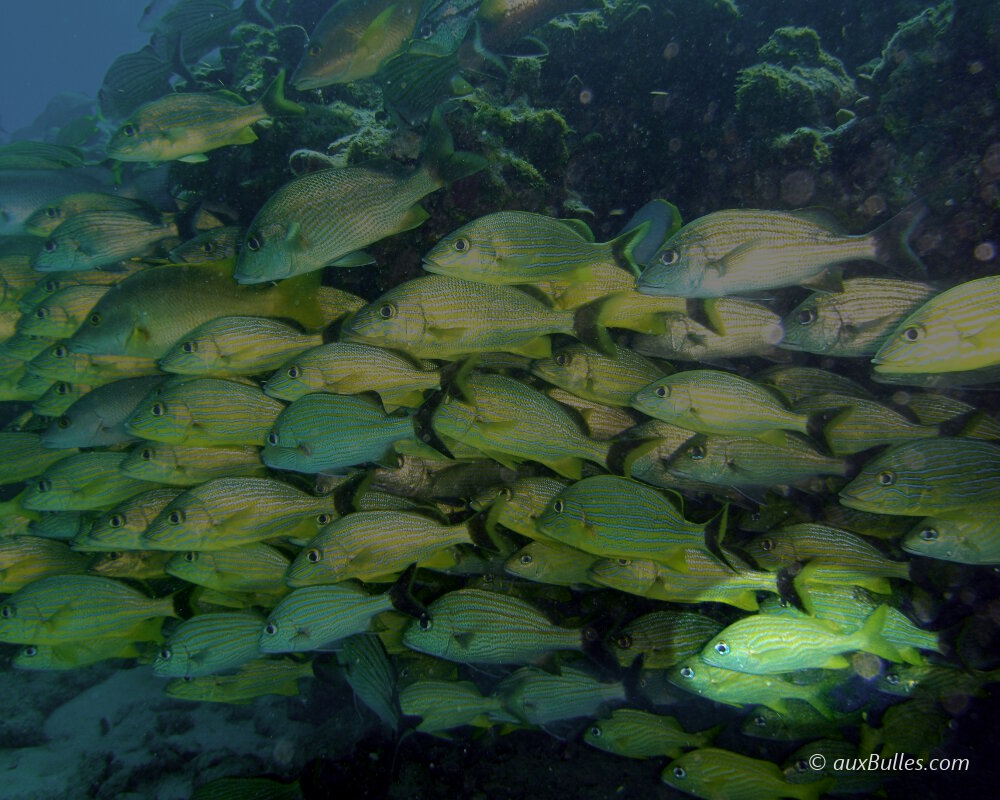
When the french grunt does not form an entire school on its own, it stays inconspicuous and blends into schools of other grunt species !
Within the same genus
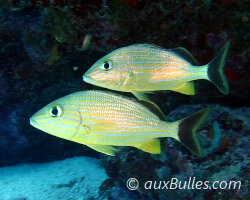
Blue striped grunt
(Haemulon sciurus)
(Haemulon sciurus)
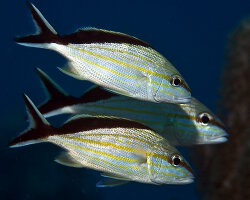
Cottonwick grunt
(Haemulon melanurum)
(Haemulon melanurum)
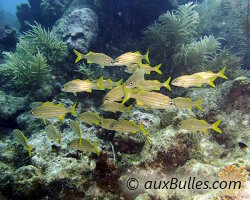
Smallmouth grunt
(Haemulon chrysargyreum)
(Haemulon chrysargyreum)
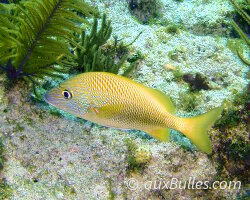
White grunt
(Haemulon plumierii)
(Haemulon plumierii)
Within the same family
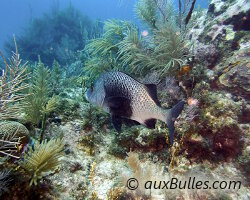
Black margate
(Anisotremus surinamensis)
(Anisotremus surinamensis)
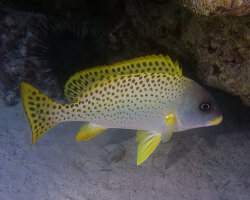
Blackspotted rubberlips
(Plectorhinchus gaterinus)
(Plectorhinchus gaterinus)
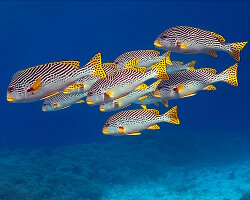
Diagonal-banded Sweetlip
(Plectorhinchus lineatus)
(Plectorhinchus lineatus)
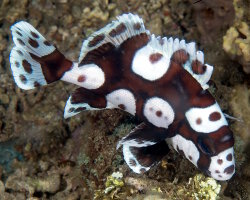
Harlequin sweetlips
(Plectorhinchus chaetodonoides)
(Plectorhinchus chaetodonoides)
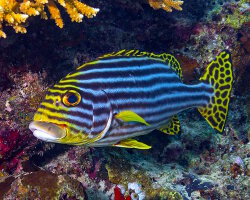
Oriental sweetlips
(Plectorhinchus vittatus)
(Plectorhinchus vittatus)
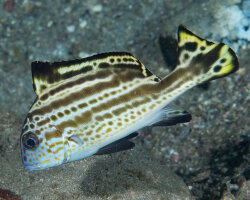
Painted sweetlips
(Diagramma pictum)
(Diagramma pictum)
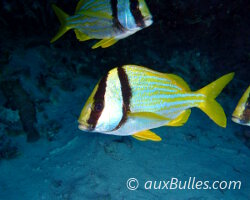
Porkfish
(Anisotremus virginicus)
(Anisotremus virginicus)
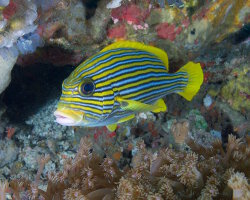
Ribboned sweetlips
(Plectorhinchus polytaenia)
(Plectorhinchus polytaenia)
Discover also

Blackeye goby
(Rhinogobiops nicholsii)
(Rhinogobiops nicholsii)
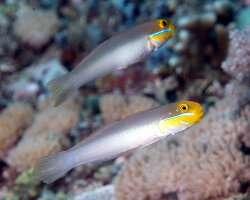
Bluestreak goby
(Valenciennea strigata)
(Valenciennea strigata)

Brown-marbled grouper
(Epinephelus fuscoguttatus)
(Epinephelus fuscoguttatus)

False leopard wrasse
(Macropharyngodon ornatus)
(Macropharyngodon ornatus)
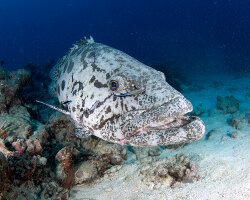
Potato grouper
(Epinephelus tukula)
(Epinephelus tukula)
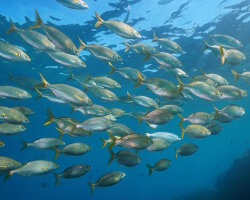
Salema
(Sarpa salpa)
(Sarpa salpa)

Twinspot signal goby
(Signigobius biocellatus)
(Signigobius biocellatus)
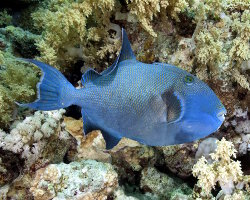
Yellow-spotted triggerfish
(Pseudobalistes fuscus)
(Pseudobalistes fuscus)
Our latestUpdates
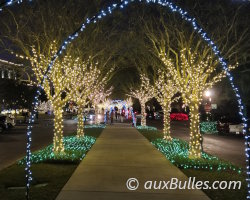
Friday, December 19th 2025
The magic of Christmas decorations
Discover Christmas decorations in Florida: giant trees, illuminated palm trees, magical light displays and tropical settings to experience the holiday magic under the sun.

Monday, December 15th 2025
The dusky shark
Discover the dusky shark, one of the world's largest coastal sharks, and learn why this powerful predator is essential to marine ecosystems.

Friday, December 12th 2025
Christmas magic at Disney hotels
Experience the magic of Christmas at Disney hotels: enchanting decorations, giant Christmas trees, dazzling lights and a festive holiday atmosphere.
Photo of the Day

Mérou oriflamme
(Epinephelus fasciatus)
(Epinephelus fasciatus)

